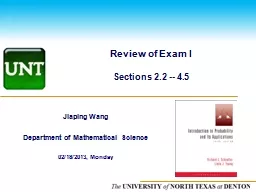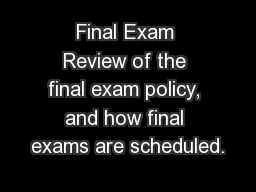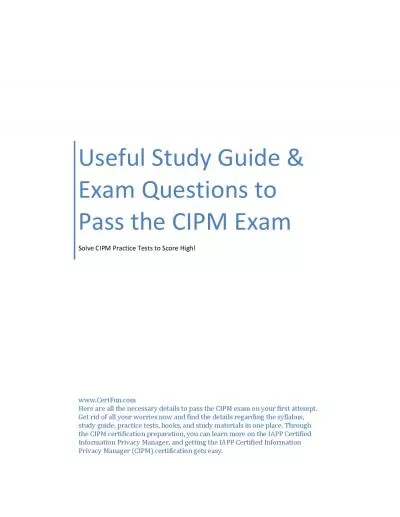PPT-Review of Exam I Sections 2.2 -- 4.5
Author : wang | Published Date : 2022-06-18
Jiaping Wang Department of Mathematical Science 02182013 Monday Outline Sample Space and Events Definition of Probability Counting Rules Conditional Probability
Presentation Embed Code
Download Presentation
Download Presentation The PPT/PDF document "Review of Exam I Sections 2.2 -- 4.5" is the property of its rightful owner. Permission is granted to download and print the materials on this website for personal, non-commercial use only, and to display it on your personal computer provided you do not modify the materials and that you retain all copyright notices contained in the materials. By downloading content from our website, you accept the terms of this agreement.
Review of Exam I Sections 2.2 -- 4.5: Transcript
Download Rules Of Document
"Review of Exam I Sections 2.2 -- 4.5"The content belongs to its owner. You may download and print it for personal use, without modification, and keep all copyright notices. By downloading, you agree to these terms.
Related Documents














